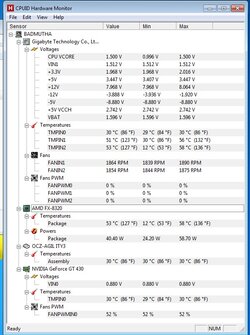I've got my FX-8320 stable @4600Mhz. Ran prime for over 2 hours no faults max temp mid 50's. I don't know if it will go higher and I'll not try with my present cooling system. I'll need better for that. I got here after pulling the bone out of my head and rereading stevenb's guide. Kept hitting walls well before I should have. I was stuck in OC Phenom II mode. Problem is I can't seem to get it to allow me to bump up the FSB. I can at slower clock speeds but not 4600. So is 4500 210 FSB better than 4600 stock FSB? How much difference does bumping FSB make? I've left the HTT at stock (auto) because it works and my tinkering doesn't. CPUNB is 2600. As far as HTT goes I can set frequency but not multiplier. So I don't know if a setting of 2200 is 2200 with 210 FSB. I can change voltage of HTT but I'm new to that setting and have no idea how much to push it. Same for NB (on board)I haven't even tried changing memory yet but I have terrible luck at that so I'll hold for off now. I'm surprised by how far these things OC and on how little voltage. I'm set at only +0.050 for cpu and 0.025 on CPUNB and gained 1.1Ghz above stock! It's just down to fine tuning now.
-
Welcome to Overclockers Forums! Join us to reply in threads, receive reduced ads, and to customize your site experience!
FX-8320 fine tuning on OC
- Thread starter Rigit
- Start date
